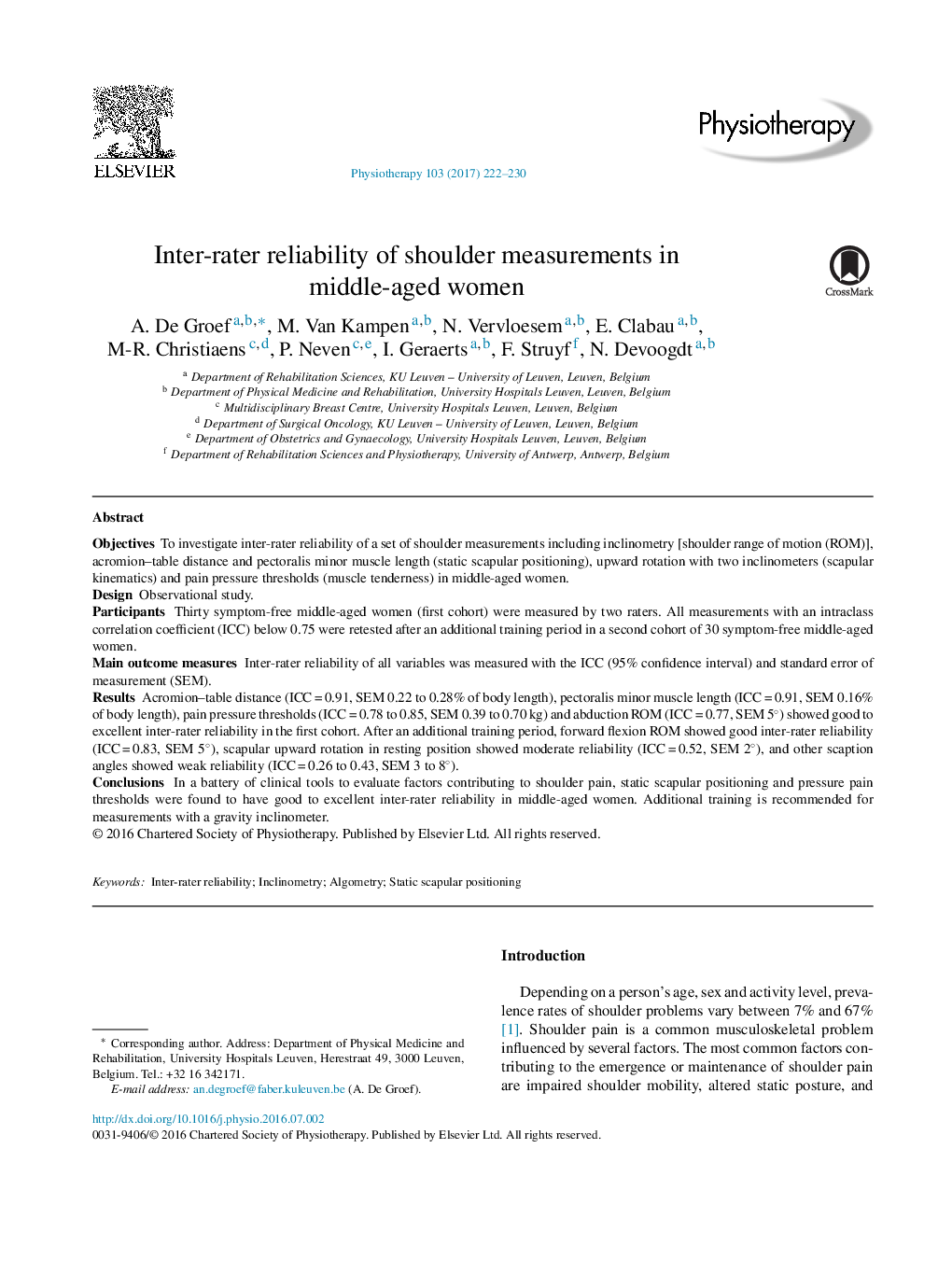| Article ID | Journal | Published Year | Pages | File Type |
|---|---|---|---|---|
| 5564903 | Physiotherapy | 2017 | 9 Pages |
ObjectivesTo investigate inter-rater reliability of a set of shoulder measurements including inclinometry [shoulder range of motion (ROM)], acromion-table distance and pectoralis minor muscle length (static scapular positioning), upward rotation with two inclinometers (scapular kinematics) and pain pressure thresholds (muscle tenderness) in middle-aged women.DesignObservational study.ParticipantsThirty symptom-free middle-aged women (first cohort) were measured by two raters. All measurements with an intraclass correlation coefficient (ICC) below 0.75 were retested after an additional training period in a second cohort of 30 symptom-free middle-aged women.Main outcome measuresInter-rater reliability of all variables was measured with the ICC (95% confidence interval) and standard error of measurement (SEM).ResultsAcromion-table distance (ICC = 0.91, SEM 0.22 to 0.28% of body length), pectoralis minor muscle length (ICC = 0.91, SEM 0.16% of body length), pain pressure thresholds (ICC = 0.78 to 0.85, SEM 0.39 to 0.70 kg) and abduction ROM (ICC = 0.77, SEM 5°) showed good to excellent inter-rater reliability in the first cohort. After an additional training period, forward flexion ROM showed good inter-rater reliability (ICC = 0.83, SEM 5°), scapular upward rotation in resting position showed moderate reliability (ICC = 0.52, SEM 2°), and other scaption angles showed weak reliability (ICC = 0.26 to 0.43, SEM 3 to 8°).ConclusionsIn a battery of clinical tools to evaluate factors contributing to shoulder pain, static scapular positioning and pressure pain thresholds were found to have good to excellent inter-rater reliability in middle-aged women. Additional training is recommended for measurements with a gravity inclinometer.
